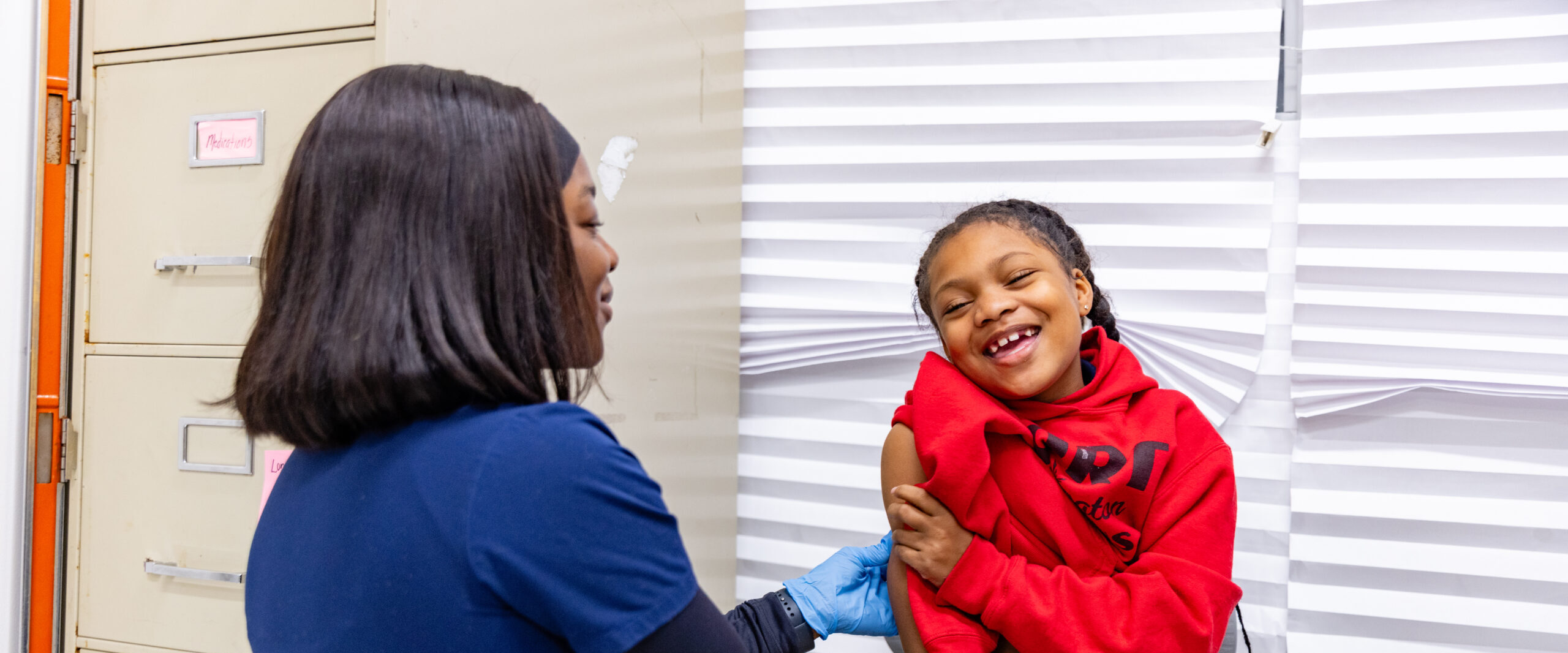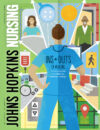JHSON-led program adds nursing suites to K-8 schools
With each child who visits a school nurse’s office comes an opportunity to improve the current and future health of an entire community, inside and outside the school. In less-affluent school systems, where nurses are rare or undersupplied, it is an opportunity too often missed, leading to predictable, preventable health ills down the road.
So when Baltimore City approached the Johns Hopkins School of Nursing about leading a program—with fellow schools of nursing at Coppin and Morgan state universities—to add and staff nursing suites at 15 elementary and middle schools across the city, the answer was as clear as the need.
“I like to give a lot of credit to our partners at the Baltimore City School System,” says Associate Professor Catherine Ling, PhD, MN, FAAN, chief nursing officer for the COMPASS Center under which the resulting School Health Nursing program falls. “We received the call, and we said, ‘Absolutely.’ This is a place where we as nurses can walk the walk, so to speak, be present in our communities when those communities are bringing forth that need.”
“The health of our kids is just as important as the health of adults, because they are the foundation of the community.”
“We have a lot of research that shows that children learn better, they stay in school more frequently, and school communities thrive when there is a nursing professional on site,” explains Ling. That, of course, includes teachers.
Through the agreement, JHSON took charge of nursing suites at Commodore John Rogers, Fort Worthington, Mount Royal, William Paca, and John Rurah K-8 schools. On paper, the nurses are expected to provide day-to-day care and preventive services to students and school communities while making sure kids are up to date on vaccines. In reality, their contributions extend so much farther.
“School health nurses are also on the front line of observing what’s going on. A lot of people may not remember, but during 9/11, it was a school nurse who first identified the chronic respiratory and lung ailments that were happening near the World Trade Center [in New York City],” Ling reminds. “That’s what school nurses do: They observe what’s going on, they see what’s happening, and they bring in the resources to begin to address those needs.”
“It is beyond when the kids get sick. [Nurses are] obviously there for that,” says Ling. “But you have children who have ongoing needs, say children with asthma and children with diabetes. We want them in school, so we want to keep them in school.”

Program supervisor Christal White, RN, a product of Baltimore City schools—“plenty” that lacked nurses back then as well—echoes Ling, reporting that was has struck her most since the suites opened in February is the sheer number of children with chronic illness, like much older humans in tiny bodies.
“We do these monthly reports that kind of give you an idea of the kind of foot traffic that is in these suites,” White explains. “What are they seeing?” She mentions one school that had officially tagged only two or three kids as having chronic care issues like asthma. Since the new nursing suite was established, the number has jumped to 22 or 23. The school didn’t know. Foot traffic at the suite has tripled. And it isn’t just asthma but diabetes, high blood pressure, and other illnesses.
“These kids were there before,” White says. “It’s just that they weren’t being treated. They can’t fix what they don’t see.”
Most scary, she says, is the arrival of a child who’s having trouble breathing—asthma exacerbation—
“and we didn’t know this kid had asthma. If they aren’t stable enough, we have to send them out, call 911 if their parent isn’t close enough.”
Once the emergency passes, White settles in for a teachable moment: “It’s about education, and interactions with parents after an incident is where the education starts.” It’s also about trust: that the nurses are there, and that they will be there tomorrow and next week too, not something that could be promised in previous school years. “It’s like, ‘Hey, you have a nurse here in the health suite,’ emphasizing the importance of us knowing about these chronic health conditions. We give them packets, ‘This is the asthma packet.’ And we have seen improvement.”
White and her nurses—Delphine Halle at Fort Worthington, Lois George at Commodore Johns Rogers, Natasha Monee Harris at Mount Royal, Nicole Mader at William Paca, and Lindsey Weer at John Rurah—are relishing such chances to make an impact:
“When I heard about this program, I was sort of like, ‘Wow! It’s a great opportunity to set an example across the board of how school health should be.’ It’s a goal we all try to attain together because we are one institution but at the same time we have a common goal with other entities and schools involved in the same project.”
And the kids?
“They have built an increased confidence with us and our presence, a sense of security, and a sense of belonging. They come to the nurses not just for health reasons but mental health breaks. Oh my gosh, they tell you these stories, and it’s like these kids have been on this planet five times longer than whatever age they are,” White says.
“At this point they’re a little spoiled,” she adds. If the regular nurse needs a day off and an agency sub is scheduled to the nursing suite, “These kids are, like, ‘Who are you? You’re not my nurse.’ But it’s appreciated. They keep coming, for whatever the case may be. They’re there.”
The nurses will be too.
“The health of our kids is just as important as the health of adults, because they are the foundation of the community,” she says. “If you have a community full of sick kids, what’s the probability of that community thriving?” ◼


